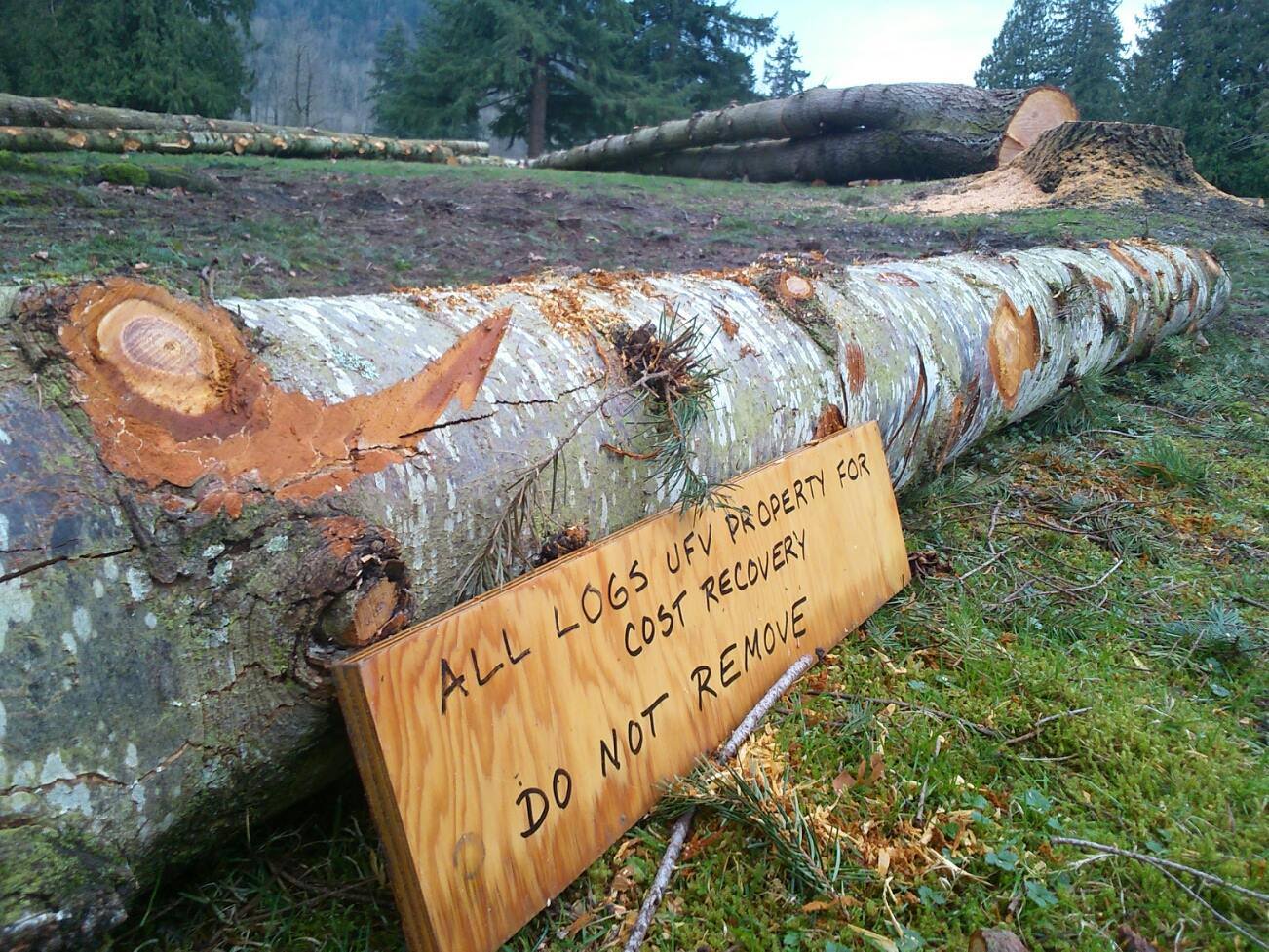By Valerie Franklin (The Cascade) – Email
Print Edition: March 4, 2015
Students familiar with the CEP campus’ elegant, shady trees may have been surprised to see a pile of over a dozen logs on the grounds when they returned from reading break. As part of the tree management program, the university has taken down 15 trees identified as potential safety hazards.
Like other individuals and organizations with large trees on their property, UFV is required by provincial and municipal bylaws to have a tree management program. Director of facilities Mark Goudsblom notes that while the CEP campus’ tall trees are attractive, they can pose a threat if not properly maintained. In past years, blown-down trees and branches have posed a threat to structures near the university, including the president’s house.
“We’ve got a beautiful lot that we need to manage, and we have to keep in mind all the people who could be walking under the trees,” Goudsblom says. “And as such we have to be very mindful that these trees [that] pose a hazard or that could be a risk need to be considered as a safety concern, and as such are taken down.”
Under UFV’s tree management program, the CEP campus land is divided into five plots. Every year an external arborist inspects these plots for potential safety hazards, such as trees that may fall in a windstorm, trees that need to be trimmed or “dead-wooded,” and trees that have simply gotten too old to remain standing safely. Following this review process, the university is given a list of recommendations and hires an outside company to carry these instructions out.
This year plot number two was examined, and it was determined that 15 trees needed to be removed. Goudsblom notes that each of these trees posed a potential safety hazard, including a row of hedges which was also removed under the tree management program.
“One of the recommendations from the arborist was to bring down the hedges so it creates an open line of sight across that plain,” Goudsblom says. “It makes for a much more open, wider, feel … It can be dark there at night, so it reduces some of those safety risks.”
Although a pile of logs can be a saddening sight, Goudsblom emphasizes that the university has been conscientious about sustainability in its replanting efforts.
“We took down 15 trees, but … for every tree we took down, we planted at least one more tree back,” Goudsblom explains. He adds that the university will be planting even more trees between V building and the barn: “We’re working with [agriculture instructor] Tom Baumann and the agricultural program, and we’re planting another 12 to 15 trees there as well,” he says.
However, choosing where to plant poses a unique challenge: the university must think 20 to 50 years in advance in order to leave flexibility for future building plans. Goudsblom notes that the university has also planned ahead for future heat waves, planting a line of shade-giving oak trees along parking lot 10 — a large patch of asphalt that heats up in the summer.
“It gets really hot,” Goudsblom explains. “So we planted fast-growing oak trees along that road, and … when they grow they’ll start to provide shade onto the parking lot, and with that it’ll reduce the thermal output.”
Through the process of replanting the trees, the university has also been mindful of the unceded Stó:l? territory on which it sits.
“We worked with [UFV’s senior advisor on indigenous affairs] Shirley Hardman and we’ve planted back three cedars close to A building, because they have a spiritual significance for our aboriginal population,” says Goudsblom. “When we plant trees back, we need to make sure we do that in line with how we see the future of the university, how we want to use our ground.”
Although some of the fallen trees may be sold to a mill as a cost-recovery effort, Goudsblom says the majority of the logs will go to UFV’s carpentry program to be used by students — an appropriate final destination for trees that have overlooked a place of learning for decades.
With files from Megan Lambert.


